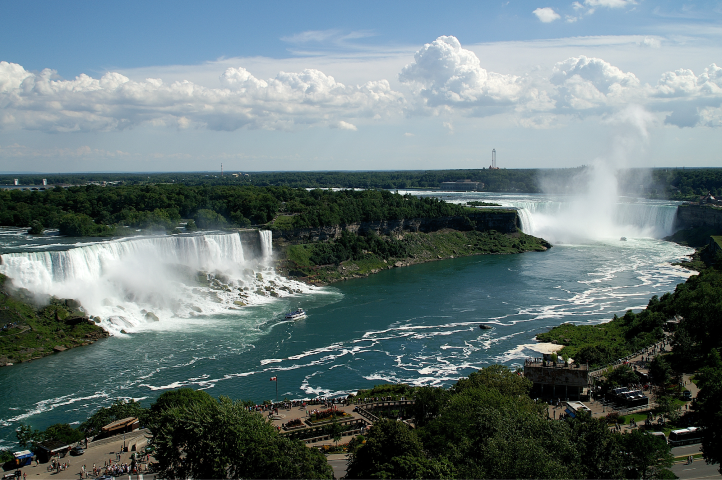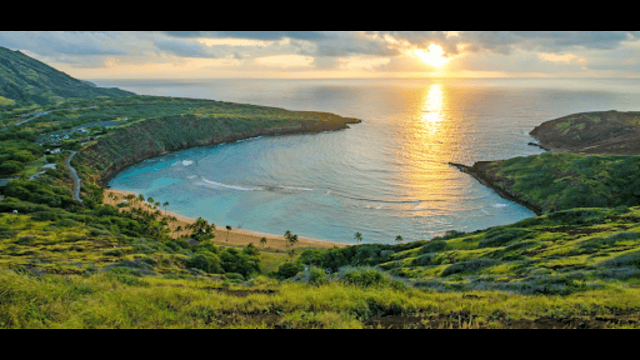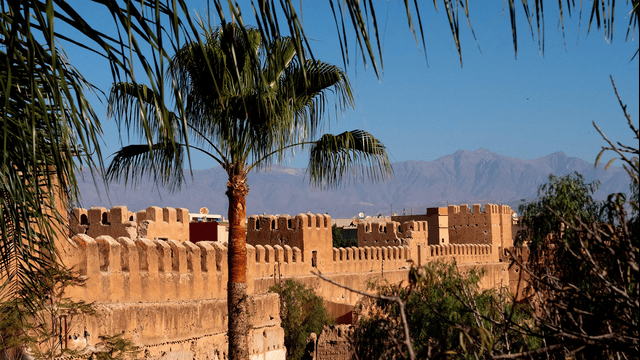
Explore Canada's diverse landscapes, from turquoise lakes in Banff to the celestial dance of Northern Lights in Yukon. Unveil the nation's pristine wonders. (Wikipedia)
Canada, renowned for its expansive and diverse landscapes, boasts a wealth of natural wonders that enchant the beholder and beckon repeated visits to this captivating destination. Ranging from majestic mountains to serene lakes, the country unfolds a tapestry of breathtaking beauty. Here, we explore some of Canada's most exquisite natural wonders that showcase the nation's awe-inspiring landscapes.
Nestled in the heart of the Canadian Rockies, Banff National Park in Alberta stands as a haven for nature enthusiasts. The park's turquoise lakes, notably the iconic Lake Louise and Moraine Lake, are enveloped by snow-capped peaks, presenting a picturesque panorama that borders on the surreal.
Niagara Falls, straddling the border between Canada and the United States in Ontario, is undoubtedly one of the world's most renowned natural wonders. The thundering waters of Horseshoe Falls, American Falls, and Bridal Veil Falls create a mesmerizing spectacle, drawing millions of visitors annually.
Adjacent to Banff, Jasper National Park in Alberta, a UNESCO World Heritage Site, is celebrated for its expansive wilderness and diverse wildlife. From the Columbia Icefield to Athabasca Falls and the awe-inspiring Maligne Canyon, Jasper offers an array of natural wonders, making it a must-visit destination.
Moraine Lake, also in Alberta and part of Banff National Park, deserves its own spotlight. Encircled by towering peaks and the Valley of the Ten Peaks, this glacially fed lake is renowned for its vibrant turquoise waters, creating a scene that graces many postcards.
Venturing into the Northwest Territories, Nahanni National Park, a UNESCO World Heritage Site, stands as a testament to Canada's untamed wilderness. With towering peaks, deep canyons, and the iconic Virginia Falls, it provides adventurous souls the opportunity to explore one of North America's most pristine and remote areas along the South Nahanni River.
For a celestial display like no other, head to Yukon to witness the Northern Lights (Aurora Borealis). The dancing colors of the aurora illuminate the night sky, creating a magical spectacle that has fascinated both scientists and dreamers for centuries.
In the Mingan Archipelago National Park Reserve, along the north shore of the St. Lawrence, Canada boasts its most extensive array of monoliths sculpted by glaciers, waves, wind, and erosive elements. A kayaking expedition or a boat tour unveils nearly a thousand islands and islets adorned with cliffs, caves, arches, and resilient rocky sentinels.
The Bay of Fundy's Hopewell Rocks in New Brunswick showcases extraordinary rock formations shaped by the world's largest tides. Twice daily, tides reaching heights of up to 16 meters transform these geological wonders into accessible walking terrain during low tide.
Vancouver Island in British Columbia offers a meeting point between nature and the Pacific. Lush rainforests, rugged coastlines, and charming communities coexist, providing opportunities for whale watching, exploring Butchart Gardens, and strolling along the shores of Long Beach in Pacific Rim National Park Reserve.
Saskatchewan's Crooked Trees near Hafford present a grove of twisted aspen trees, a botanical marvel and mystery. While scientists offer explanations such as genetic mutation or meteorite impact, locals entertain the possibility of alien intervention, making it a unique destination in Canada.
Formerly known as the Queen Charlotte Islands, Haida Gwaii in British Columbia stands as Canada's remotest archipelago. Unspoiled beauty, including Alpine mountains, sandy beaches, and rainforests, characterizes this region inhabited by the Haida people. Nicknamed the ‘Galapagos of the North,’ it remains undeveloped, showcasing a diverse range of flora and fauna.















